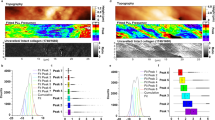Abstract
Following injury of a complementary joint restraint, ligaments can be subjected to higher than normal stresses. Normal ligaments are exposed to static (creep) and cyclic (fatigue) loading from which damage can accumulate at these higher than normal stresses. This study tracked damage accumulation during creep and fatigue loading of normal rabbit medial collateral ligaments (MCLs) over a range of stresses, using modulus reduction as a marker of damage. Creep tests were interrupted occasionally with unloading/reloading cycles to measure modulus. Test stresses were normalized to ultimate tensile strength (UTS): 60%, 30%, and 15% UTS. Not all creep and fatigues tests progressed until rupture but were stopped and followed by an assessment of the residual strength of that partially damaged ligament using a monotonic failure test. Fatigue loading caused earlier modulus reduction than creep. Modulus reduction occurred at lower increases in strain (strain relative to initial strain) for fatigue than creep. In other words, at the same time or increase in strain, fatigue is more damaging than creep because the modulus ratio reduction is greater. These findings suggest that creep and fatigue have different strain and damage mechanisms. Ligaments exposed to creep or fatigue loading which produced a modulus reduction had decreased residual strength and increased toe-region strain in a subsequent monotonic failure test. This finding confirmed that modulus reduction during creep and fatigue is a suitable marker of partial damage in ligament. Cyclic loading caused damage earlier than static loading, likely an important consideration when ligaments are loaded to higher than normal magnitudes following injury of a complementary joint restraint.




Similar content being viewed by others
References
Devore J. L. 2000. Probability and Statistics for Engineering and the Sciences, 5 edn. Thomson Brooks/Cole Duxbury, Pacific Grove, CA, pp 42–43
Hingorani R. V., Provenzano P. P., Lakes R. S., Escarcega A., Vanderby R. Jr. 2004 Nonlinear viscoelasticity in rabbit medial collateral ligament. Ann. Biomed. Eng. 32: 306–312
Panjabi M. M., Courtney T. W. 2001 High-speed subfailure stretch of rabbit anterior cruciate ligament: changes in elastic, failure and viscoelastic characteristics. Clin. Biomech. 16:334–340
Panjabi M. M., Yoldas E., Oxland T. R., et al. 1996 Subfailure injury of the rabbit anterior cruciate ligament. J. Orthop. Res. 14:216–222
Poursartip A., Ashby M., Beaumont P. 1986 The fatigue damage mechanics of a carbon fibre laminate: I—development of the model. Compos. Sci. Tech. 25:193–218
Provenzano P. P., Heisey D., Hayashi K., et al. 2002 Subfailure damage in ligament: a structural and cellular evaluation. J. Appl. Physiol. 92:362–371
Provenzano P. P., Alejandro-Osorio A. L., Valhmu W. B., et al. 2005 Instrinsic fibroblast-mediated remodeling of damaged collagenous matrices in vivo. Matrix Biol. 23:543–555
Provenzano P. P., Vanderby R. Jr. 2005 Collagen fibril morphology and organization: implications for force transmission in ligament and tendon. Matrix Biol. 25:71–84
Puxkandl R., Zizak I., Paris O., et al. 2002 Viscoelastic properties of collagen: synchrotron radiation investigations and structural model. Philos. Trans. Roy. Soc. Lond. B Biol. Sci. 357:191–197
Redaelli A., Vesentini S., Soncini M., et al. 2003 Possible role of decorin glycosaminoglycans in fibril to fibril force transfer in relative mature tendons: a computational study from molecular to microstructural level. J. Biomech. 36:1555–1569
Robinson J. R., Bull A. M. J., Amis A. A. 2005 Structural properties of the medial collateral ligament complex of the human knee. J. Biomech. 38:1067–1074
Schechtman H., Bader D. L. 1997 In vitro fatigue of human tendons. J. Biomech. 30:829–835
Schechtman H., Bader D. L. 2002 Fatigue damage of human tendons. J. Biomech. 35:347–353
Shelburne K. B., Pandy M. G., Torry M. R. 2004 Comparison of shear forces and ligament loading in the healthy and ACL-deficient knee during gait. J. Biomech. 37: 313–319
Thornton, G. M., T. D. Schwab, and T. R. Oxland, Cyclic loading causes faster rupture and strain rate than static loading in ligament at high stress. Clin. Biomech. (2007), doi: 10.1016/j.clinbiomech.2007.05.004.
Thornton G. M., Shrive N. G., Frank C. B. 2002 Ligament creep recruits fibres at low stresses and can lead to modulus-reducing fibre damage at higher creep stresses: a study in rabbit medial collateral ligament model. J. Orthop. Res. 20: 967–974
Torp S., Arridge R. G. C., Armeniades C. D., et al. Structure–property relationships in tendon as a function of age. In: Atkins E. D. T., Keller A., editors. Structure of Fibrous Biopolymers. Butterworths, London: The Colston Research Society; 1975. pp. 197–221
Vesentini S., Redaelli A., Montevecchi F. M. 2005 Estimation of the binding force of the collagen molecule-decorin core protein complex in collagen fibril. J. Biomech. 38:433–443
Wang X. T., Ker R. F. 1995 Creep rupture of wallaby tail tendons. J. Exp. Biol. 198:831–845
Wang X. T., Ker R. F., Alexander R. M. 1995 Fatigue rupture of wallaby tail tendons. J. Exp. Biol. 198:847–852
Weiss J. A., Gardiner J. C. 2001 Computational modeling of ligament mechanics. Crit. Rev. Biomed. Eng. 29:303–371
Wren T. A., Lindsey D. P., Beaupre G. S., et al. 2003 Effects of creep and cyclic loading on the mechanical properties and failure of human Achilles tendons. Ann. Biomed. Eng. 31:710–717
Woo S. L., Danto M. I., Ohland K. J., et al. 1990 The use of a laser micrometer system to determine the cross-sectional shape and area of ligaments: a comparative study with two existing methods. J. Biomech. Eng. 112: 426–431
Yahia L., Brunet J., Labelle S., et al. 1990 A scanning electron microscopic study of rabbit ligaments under strain. Matrix 10:58–64
Zioupos P., Wang X. T., Currey J. D. 1996 Experimental and theoretical quantification of the development of damage in fatigue tests of bone and antler. J. Biomech. 29:989–1002
Acknowledgment
The authors gratefully acknowledge the support of the Natural Sciences and Engineering Research Council of Canada (NSERC).
Author information
Authors and Affiliations
Corresponding author
Rights and permissions
About this article
Cite this article
Thornton, G., Schwab, T. & Oxland, T. Fatigue is More Damaging than Creep in Ligament Revealed by Modulus Reduction and Residual Strength. Ann Biomed Eng 35, 1713–1721 (2007). https://doi.org/10.1007/s10439-007-9349-z
Received:
Accepted:
Published:
Issue Date:
DOI: https://doi.org/10.1007/s10439-007-9349-z




